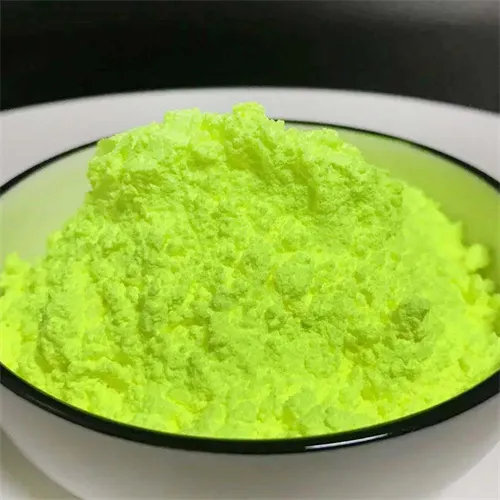Warning: Undefined array key "title" in /home/www/wwwroot/HTML/www.exportstart.com/wp-content/themes/1198/header.php on line 6
Warning: Undefined array key "file" in /home/www/wwwroot/HTML/www.exportstart.com/wp-content/themes/1198/header.php on line 7
Warning: Undefined array key "title" in /home/www/wwwroot/HTML/www.exportstart.com/wp-content/themes/1198/header.php on line 7
Warning: Undefined array key "title" in /home/www/wwwroot/HTML/www.exportstart.com/wp-content/themes/1198/header.php on line 7
- Afrikaans
- Albanian
- Amharic
- Arabic
- Armenian
- Azerbaijani
- Basque
- Belarusian
- Bengali
- Bosnian
- Bulgarian
- Catalan
- Cebuano
- China
- China (Taiwan)
- Corsican
- Croatian
- Czech
- Danish
- Dutch
- English
- Esperanto
- Estonian
- Finnish
- French
- Frisian
- Galician
- Georgian
- German
- Greek
- Gujarati
- Haitian Creole
- hausa
- hawaiian
- Hebrew
- Hindi
- Miao
- Hungarian
- Icelandic
- igbo
- Indonesian
- irish
- Italian
- Japanese
- Javanese
- Kannada
- kazakh
- Khmer
- Rwandese
- Korean
- Kurdish
- Kyrgyz
- Lao
- Latin
- Latvian
- Lithuanian
- Luxembourgish
- Macedonian
- Malgashi
- Malay
- Malayalam
- Maltese
- Maori
- Marathi
- Mongolian
- Myanmar
- Nepali
- Norwegian
- Norwegian
- Occitan
- Pashto
- Persian
- Polish
- Portuguese
- Punjabi
- Romanian
- Russian
- Samoan
- Scottish Gaelic
- Serbian
- Sesotho
- Shona
- Sindhi
- Sinhala
- Slovak
- Slovenian
- Somali
- Spanish
- Sundanese
- Swahili
- Swedish
- Tagalog
- Tajik
- Tamil
- Tatar
- Telugu
- Thai
- Turkish
- Turkmen
- Ukrainian
- Urdu
- Uighur
- Uzbek
- Vietnamese
- Welsh
- Bantu
- Yiddish
- Yoruba
- Zulu
Dic . 31, 2024 11:04 Back to list
Exploring the Health Impacts of Aspartame and Sucralose in Food Products
The Sweet Debate Aspartame vs. Sucralose
In recent years, the popularity of artificial sweeteners has surged as more people seek to reduce sugar intake while still satisfying their sweet cravings. Among the most widely used non-nutritive sweeteners are aspartame and sucralose. Both have their ardent supporters and detractors, leading to questions about their safety, effectiveness, and impact on health. This article delves into a comparison of aspartame and sucralose, examining their structures, uses, and the ongoing debates surrounding them.
Chemical Composition and Taste
Aspartame is a low-calorie sweetener that is approximately 200 times sweeter than sucrose (table sugar). It is composed of two amino acids phenylalanine and aspartic acid. Because of its composition, aspartame is metabolized in the body and contributes some calories, although the amount is negligible due to the small quantities used in food products. It is often found in diet sodas, sugar-free desserts, and an array of low-calorie snacks.
On the other hand, sucralose, marketed under the brand name Splenda, is derived from sucrose through a process that selectively chlorinates sugar molecules, resulting in a compound about 600 times sweeter than regular sugar. Unlike aspartame, sucralose is not metabolized by the body, meaning it contributes no calories. This property makes it a popular choice for consumers looking to sweeten foods without the associated calories or blood sugar spikes.
Health Concerns and Controversies
Both sweeteners have faced scrutiny regarding their safety. Aspartame has been under fire since its approval by the FDA in the early 1980s, with concerns about its potential links to various health issues, including headaches, allergic reactions, and, more seriously, cancer. However, numerous studies conducted by regulatory bodies such as the FDA, EFSA (European Food Safety Authority), and WHO (World Health Organization) have consistently shown that aspartame is safe for the general population when consumed within established daily limits.
aspartame sucralose

Sucralose has also experienced its share of controversies. Criticism often centers on its potential effects on gut health and possible links to diabetes and obesity. Some studies suggest that sucralose may alter gut microbiota, but the evidence remains inconclusive. Regulatory agencies have deemed sucralose safe for consumption, and it has been widely used in various food and beverage products without major issues.
Use in Food and Beverage Industries
The uses of aspartame and sucralose extend beyond just sweetening. They can also serve as flavor enhancers and preservatives, making them versatile ingredients in the food industry. Aspartame is frequently found in diet sodas, light yogurt, and sugar-free candies, while sucralose is used in baked goods, beverages, and even table-top sweeteners.
The choice of sweetener can significantly influence consumer preference and dietary habits. While some consumers prefer the taste profile of aspartame in beverages, others may find sucralose to have a more favorable flavor in baking applications.
The Bottom Line
The discussion surrounding aspartame and sucralose is emblematic of the broader debate about artificial sweeteners. While both are approved for use and monitored for safety, individual preferences and health considerations continue to drive consumer choices. Ultimately, moderation is key—these sweeteners can be part of a balanced diet when consumed responsibly.
The landscape of sweeteners will likely continue to evolve as research unfolds, and consumer awareness increases. Understanding the differences between aspartame and sucralose can help individuals make informed decisions that align with their health goals and taste preferences. Whether one prefers the nuanced sweetness of aspartame or the non-caloric kick of sucralose, the choice remains personal, shaped by taste, health, and lifestyle.
Latest news
-
Certifications for Vegetarian and Xanthan Gum Vegetarian
NewsJun.17,2025
-
Sustainability Trends Reshaping the SLES N70 Market
NewsJun.17,2025
-
Propylene Glycol Use in Vaccines: Balancing Function and Perception
NewsJun.17,2025
-
Petroleum Jelly in Skincare: Balancing Benefits and Backlash
NewsJun.17,2025
-
Energy Price Volatility and Ripple Effect on Caprolactam Markets
NewsJun.17,2025
-
Spectroscopic Techniques for Adipic Acid Molecular Weight
NewsJun.17,2025

